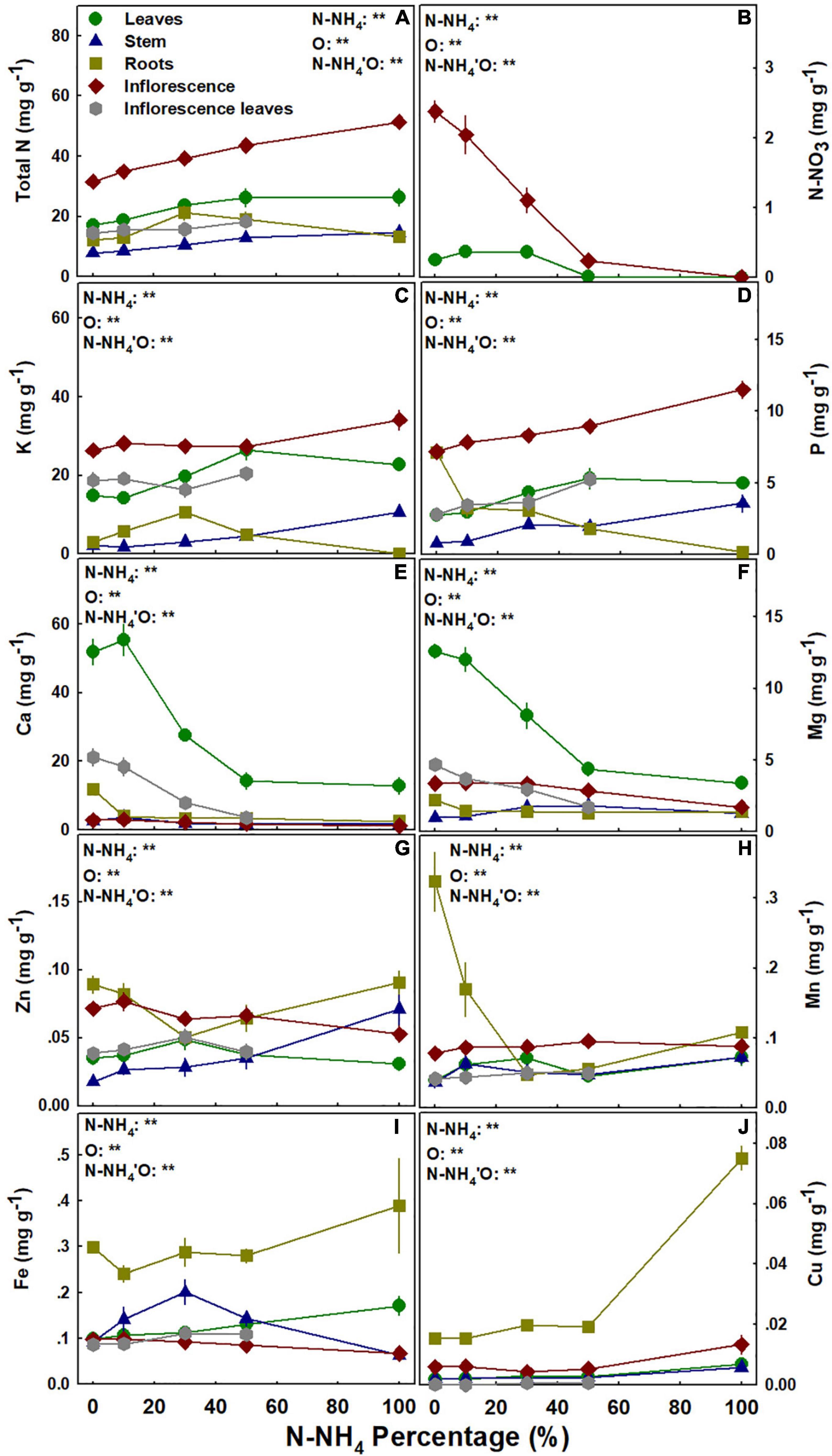Forms of Nitrogen
Forms of Nitrogen
Elementum nulla turpis cursus. Integer liberos kusto euismod aene pretium faucibus ...
NO3 or NH4?
Click for a TLDR
Nitrogen, primarily supplied in the forms of ammonium (NH4+) or nitrate (NO3–), plays a pivotal role in determining the plant’s metabolic responses. A recent study conducted by Saloner, Avia, and Bernstein, Nirit delved deep into the effects of varying NH4/NO3 ratios on cannabis plants. The research aimed to understand how these ratios influence the physiological function, cannabinoid and terpenoid biosynthesis, and overall plant development.
Nitrogen Forms and Their Impact
Cannabis primarily absorb nitrogen in two forms: ammonium (NH₄⁺) and nitrate (NO₃⁻). The type of nitrogen provided can profoundly shape its function and metabolic reactions. For instance, nitrate must be converted to ammonium before being assimilated, making nitrate metabolism less energy-efficient than that of ammonium. Additionally, the uptake mechanisms for these nitrogen forms differ, leading to distinct impacts on the plant and its surroundings.
Cation Exchange: The Unsung Hero
Cation exchange capacity (CEC) is a measure of how well soil can retain and supply cations to plant roots. Cations are positively charged ions, and in the context of nitrogen nutrition, ammonium (NH₄⁺) is a cation. When plants uptake ammonium, they often release hydrogen ions (H⁺) to maintain charge balance. These hydrogen ions can increase soil acidity, which in turn affects nutrient availability.
The importance of CEC becomes evident when considering the competition between ammonium and other cations like potassium, calcium, and magnesium. A soil with a high CEC can hold onto these essential cations, ensuring they don’t get leached away and remain available for plant uptake. This balance is crucial for cannabis plants, which require a range of nutrients for optimal growth and metabolite production.
Balancing the NH₄/NO₃ Ratio with CEC in Mind
The ratio of ammonium to nitrate (NH₄/NO₃) supplied to cannabis can significantly influence the production of cannabinoids and terpenoids, the primary compounds of interest. However, it’s not just about the ratio; it’s also about understanding the soil’s CEC and how it interacts with the provided nitrogen. For instance, in soils with a low CEC, high ammonium levels might lead to a loss of essential cations, potentially harming the plant. Conversely, in soils with a high CEC, the soil can buffer against these changes, providing a more stable environment for the plant.
Balancing Act for Optimal Growth
Different plant species have varied preferences for nitrate-based or ammonium-based nutrition. Most culitvars thrive under a combined supply of both forms, typically in the range of 20–80% NH₄/NO₃ ratio. Supplying both forms of nitrogen to plants can enhance plant secondary metabolism, as observed in various studies on different plant species.
TLDR
Nitrogen (N) uptake in plants primarily occurs in the form of nitrate (NO3–) or ammonium (NH4+). These two forms of nitrogen have distinct impacts on the plant and its surrounding environment due to their different electrochemical properties:
- Electrochemical Differences: NO3– is an anion, while NH4+ is a cation. This means they have different mechanisms for uptake into plant roots and can influence the plant’s environment differently.
- Competition with Other Nutrients: NO3– can inhibit the root uptake and accumulation of other nutrients. Similarly, NH4+ can compete with other cations like potassium (K), calcium (Ca), and magnesium (Mg) for root uptake. This competition can affect the overall nutrient balance in the plant.
- Impact on Rhizosphere pH: The form of nitrogen supplied can significantly influence the pH of the rhizosphere (the soil region surrounding the plant’s roots). When roots absorb NH4+, they release hydrogen ions (H+), leading to rhizosphere acidification. In contrast, NO3– uptake causes rhizosphere alkalinization. This pH adjustment can influence nutrient availability and overall plant health.
At The Silica Chamber, we blend science with hands-on experimentation, diving deep into peer-reviewed research to uncover the best in cannabis cultivation, consumption, and lifestyle. Whether you’re here to learn, experiment, or share insights, we’re building a community that thrives on knowledge and curiosity.
DavidPaul
In love with smart home designing, photography and nerding out over network architecture

